Table of Contents
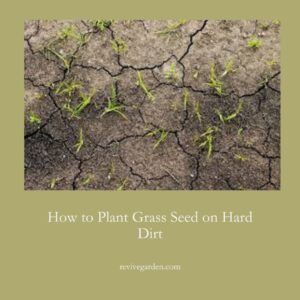
Nowadays, it’s not unrealistic to expect a thick, verdant lawn, even on hard ground. There are many people whose yards are full of hard dirt, and they’ve given up trying to grow grass there. The difficulty of planting grass seed on hard dirt and grass maintenance on hard ground is apparent, but fixing sections of hard dirt before planting grass seed will create perfect grass-growing conditions.
In this article, we’ll discuss the steps you may take to achieve your ideal lawn in your yard, regardless of the soil conditions.
You can learn more about the timeline of grass seed growth in our article on How long it takes for grass seed to grow.
Causes Of Hard Dirt Hard Ground
Hard ground, characterized by compacted and dense soil, is a major obstacle to cultivating lush grass. Several factors contribute to its formation. Firstly, the lack of organic matter deprives the soil of crucial nutrients and disrupts its structure. Secondly, heavy foot traffic in frequently traversed areas compresses the soil, reducing porosity. Construction activities and the use of heavy machinery also lead to soil compaction.
Moreover, erosion removes topsoil, exposing denser subsoil. Improper watering practices, such as overwatering or underwatering, contribute to hard ground by affecting soil structure. Soil composition, with clay soils being more prone to compaction, also plays a role. Freeze-thaw cycles and heavy rainfall further exacerbate soil density. Understanding these causes empowers gardeners to implement appropriate measures for breaking up the hard ground, creating a favorable environment for robust grass growth.
How To Plant The Grass Seed On Hard Dirt? – Step-By-Step Guide
Grass seeding in compacted soil is challenging, but it is possible. You’ll need extra time and effort to make it work. Here are some methods to do to soften your soil so that you can produce lush grass.
Tools And Materials Required For Grass Seeds On Hard Dirt
The specific tools and materials required may vary depending on the size of the area and individual preferences. However, these essential items will aid in preparing the hard dirt and promoting successful grass seed germination.
| Tools | Materials |
| Tiller or cultivator | Grass seed |
| Shovel or garden fork | Organic matter (compost, manure) |
| Rake | Lime or sulfur (if needed) |
| Leveling tool | Watering equipment |
| Soil test kit | Straw or mulch (optional) |
How to Prepare the Area For Grass Seeds On Hard Dirt?
To successfully plant grass seeds on hard dirt, thorough preparation is essential. Begin by clearing the area of debris and weeds to ensure proper seed-to-soil contact. Loosen the compacted soil using a tiller or hand tools, improving aeration and drainage. Level the ground for even seed distribution. Amend the soil with organic matter to enhance its structure and nutrient content. Conduct a soil test to identify deficiencies and adjust the pH level accordingly. Select grass seeds suitable for compacted soils and local growing conditions. With proper preparation, regular watering, and maintenance, the grass will have a better chance to establish strong roots and thrive on hard dirt.
Perform a Soil Analysis
A soil test on your lawn is the first step in growing grass seed on hard dirt. To ensure the success of your grass seed when planted on hard ground, it is essential to have a soil test performed. You can if a soil test is performed at any reputable lab. You will learn what led to the hardening of the soil in your lawn and how to prevent it from happening again.
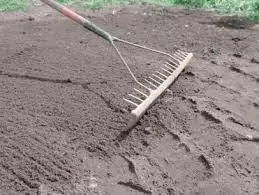
Grass seeding on compacted soil or restoring once-fertile soil to support grass growth is analogous to curing an illness. Soil healing is similar to medical treatment; you can’t fix your grass without knowing what’s wrong. Your lawn’s soil is turning into hard dirt, but if you obtain a soil test, you’ll know exactly what’s wrong and why and can treat and cure it properly.
Cultivating the Ground
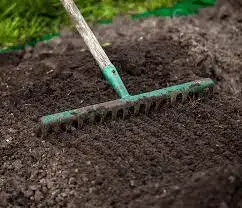
At this stage, you should prepare the soil in your yard so that grass can grow there. Here are the fundamental actions involved in this procedure:
- First, clean the area where you want to grow lush grass of all trash and garbage, especially stones and large pebbles. The development of grass is stunted when these things are present.
- Ensure the dirt isn’t compacted by working it with a tiller or an iron rake. Existing lawns can benefit from aeration if the yard is already established. One should try to break down all dirt into clumps no bigger than a pea.
- Third, smooth out the ground so that there are no ridges. It is the best way to do it before any grass seed is planted.
- Fourth, work on bettering the soil. A layer of screened compost or topsoil applied to the grass will do the trick. Mixing the topsoil and the earth underneath can minimize the difference between the topsoil and the earth. In this case, a rake will do the trick.
- An excellent, quick-release starting fertilizer will assist your new grass seedlings to develop strong roots that can penetrate your hard turf, so don’t forget to apply some of that before you plant your grass seeds.
For a hardy and resilient grass option, consider using Zoysia grass seed for your lawn – learn more about its benefits here.
Pick Quality Grass Seed
Based on the available data, you should have made recommendations for the type of grass seed. The improper grass seed may have to sow more seeds differently than planned. Getting it right the first time is in your best interest to save money and effort. Therefore, pick a grass seed tailored to the results of your soil test rather than just one designed for thriving in demanding terrain.
Add Fertilizer to the Soil

In addition, it is recommended that fertilizer be combined with the seed before planting. Doing so will help the grass seed establish itself and grow more rapidly. One must never forget that there are situations where using too much fertilizer could cause more harm than good. When you put in too much effort, you can burn the soil and stop growth for weeks or months. Using fertilizer is mandatory, but make sure you don’t go overboard and use more than is required. Having a greater quantity of something does not ensure that it is better.
Watering the Lawn Regularly While the Seeds Are Germinating
After then, it is maintaining a consistent moisture level is crucial. Grass seeds need water to germinate in every soil type. Maintain a moist environment for the roots. Sustaining damp but not wet soil is vital when you plant seeds. It’s well worth the effort, as the source will eventually take root and become less dependent on constant care.
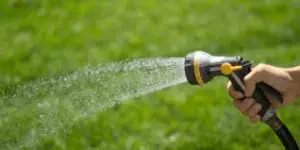
Planting grass seed is best done in the late spring once the ground has warmed, or in the early fall when the soil is more likely to be moist throughout the growing season after the intense summer heat has faded. As a bonus, you have a lower risk of being hit with an unexpected watering limit. Happy grass-planting time in early September!
The Grass Needs Fertilizer
When you started working on your lawn, the soil you were using was not actual soil; somewhat, it was compacted earth. You worked the ground and planted grass seeds in it, and while you did water, everyone knows that hard dirt severely lacks nutrients and will require fertilizers to grow.
Fertilizers are the next stage in successful grass seed planting on hard earth after watering the seeds and beginning germination. Like plants and grasses, humans require nutrients for optimal growth; fertilizing the grass ensures that the soil has what it needs to promote optimal grass development.
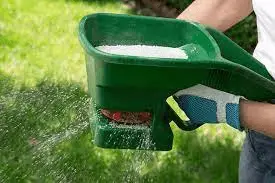
To fertilize the grass optimally, one must wait until the newly planted seeds have begun to grow. The grass can be fertilized by simply spraying the liquid or spreading the powder. Depending on the state and needs of your lawn’s soil, Spreading 1,000 square feet of grass with 1 pound of fertilizer should do the trick.
Trim the grass
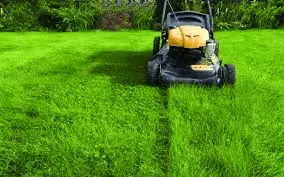
It needs to be mowed when the grass reaches about three inches in height. What kind of grass you have will determine how short or long you should cut it. The recommended mowing height for cool-season grass is 2 inches, while that for warm-season grass is between 1 and 2 inches. A high-quality riding mower will quickly work even the most extensive lawns. Using sharp, brand-new lawnmower blades is essential for a clean cut. Consistently mow the lawn so that no more than a third of the grass is cut off at a time.
Troubleshooting Common Issues About Grass Seed on Hard Dirt
Troubleshooting common issues is essential to maintaining a healthy and attractive lawn, especially when planting grass seed on hard dirt. Several problems can arise during the growth process, and identifying and addressing them promptly is crucial for successful lawn establishment. Here are some common issues that may occur and their explanations:
| Common Lawn Troubles | Solutions |
| Patchy Growth and Thin Areas | Reseed the affected areas, ensuring even seed distribution and proper soil preparation. |
| Soil Compaction | Regularly aerate the lawn to alleviate compaction and promote root growth. |
| Lawn Diseases | Apply appropriate fungicides and improve lawn drainage to prevent disease development. |
| Weeds and Unwanted Plants | Regularly weed the lawn and maintain a healthy, thick lawn to prevent weed invasion. |
| Insect Infestations | Apply insecticides or use natural pest control methods to manage infestations. |
| Poor Drainage | Install proper drainage systems or amend the soil to enhance water movement. |
| Overwatering or Underwatering | Establish a consistent watering schedule based on your lawn’s needs and weather conditions. |
| pH Imbalance | Regularly test the soil pH and adjust with lime or sulfur to achieve a balanced pH. |
| Thatch Buildup | Use dethatching tools to remove excessive thatch and promote better nutrient absorption and water penetration. |
For optimal results, check out our Grass Seed Germination Temperature Chart to ensure the perfect conditions for successful growth when planting grass seed on hard dirt.
Conclusion
This article presented how to plant grass on hard dirt, as Grass does not thrive in too hard soil. If you implement these regulations on How to plant grass seeds on hard dirt, you can grow grass everywhere, no matter how harsh the conditions. It’s not hard to accomplish, just time-consuming.

